We’ve all been there: You’re preparing for a new lesson, with standards-related content to teach your students. You’ve got great activities lined up…but you can’t locate text for your English learners that is relevant AND on a reading level they can access. You think you could probably track down a sort-of-relevant book for early readers. But you have a feeling it is not going to sufficiently get across the content. You don’t have time to go hunting on the internet for that “just right” text, and couldn’t afford the expensive differentiated book set on the topic. This is a common and often frustrating position to find yourself in, but there is good news! English learners can often have a positive learning experience with grade-level text, and get some instructional “meat” out of it. They just need the text to be presented in a way that supports their comprehension. I’m here to share how to scaffold for ELLs so they can interact with your grade-level text and participate in learning.
These strategies aren’t too hard to put into practice in your classroom! Don’t try to do them all at once, of course. Choose one or two to try out the next time you have some important text to present to your class.
Text Accessibility Strategies for ELLs
So you might be about to read from a textbook as a class, or giving a reading passage to teach about a science or social studies topic. Maybe you’re modeling how to write a letter or an opinion paper. Perhaps you’re simply writing your content and language objectives on the board. With your English learners always in mind, you may be already in the habit of considering with each text that shows up in the classroom: Is this comprehensible to my ELLs? What strategies for ELLs might be beneficial here?
The thing is, they already have some cognitive assets that they’ve been using already to make sense of words on a page. They are constantly making connections to familiar words, contextual clues, synonyms, and cognates. There may be some things that their home language has in common with English, and they may already have locked in on some patterns. When confronted with a grade-level text, our ELLs can put these assets together with our scaffolds to get the most out of the reading. With time, they will need fewer scaffolding as their English proficiency grows. No, they may not understand grade-level texts 100% right now. But if you’re in a bind and those texts are all you’ve got, can we agree that it’s worth doing our best to help them gain some new understandings from it? Here are some ways it’s possible.
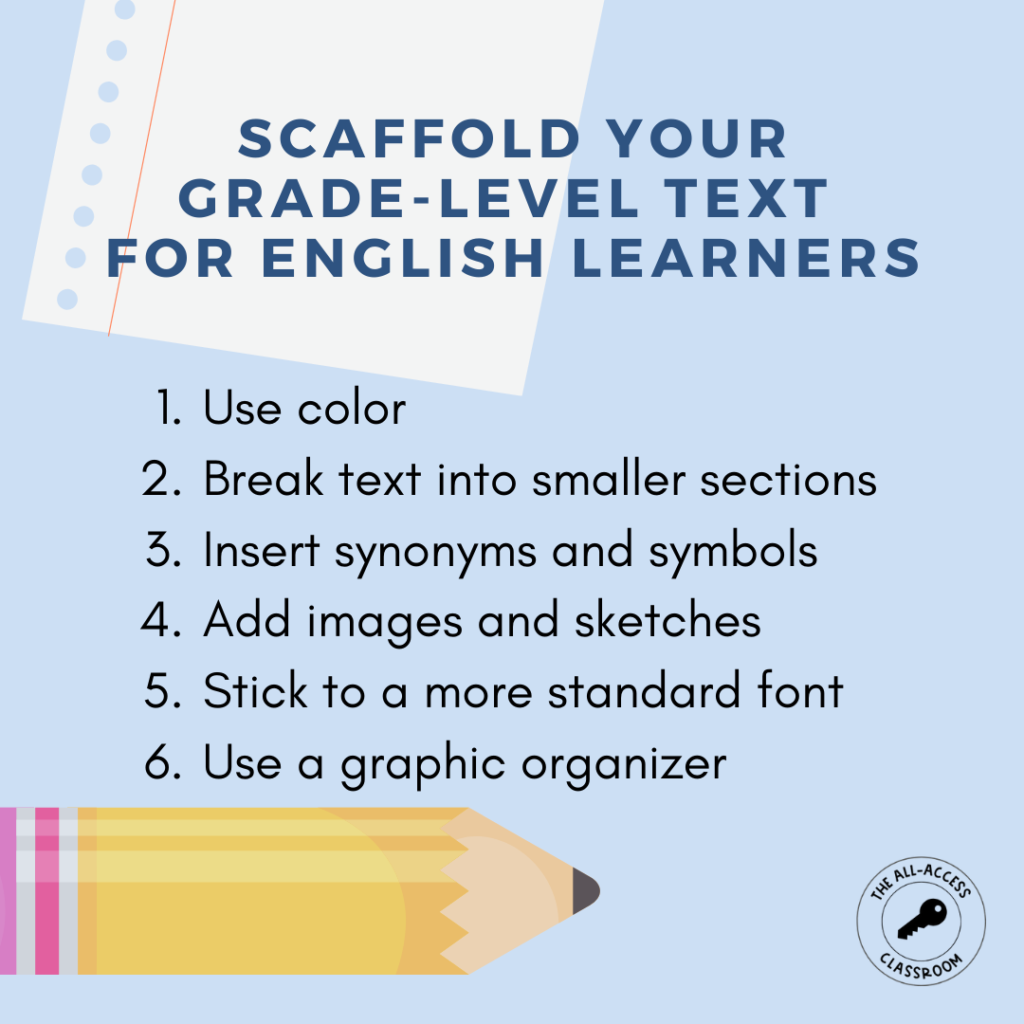
Use Color
One of my favorite strategies for ELLs is the purposeful use of color in text. There are many possibilities. You can add color to set apart:
- Parts of speech
- Key vocabulary
- Parts of a word, sentence, paragraph, or whole text
- Rhyming words
- Academic vocabulary
- Characters or characters’ actions
- Important details or information
- Important components of activity instructions
- Key words in assessment questions
- Topics that need to be differentiated or compared to one another
- Spelling or phonemic patterns
- and more!
The important thing to remember is that the colors used should be premeditated, purposeful, and explained to students. When learning how to scaffold for ELLs, you become stronger in determining what works best for your students and your lessons.
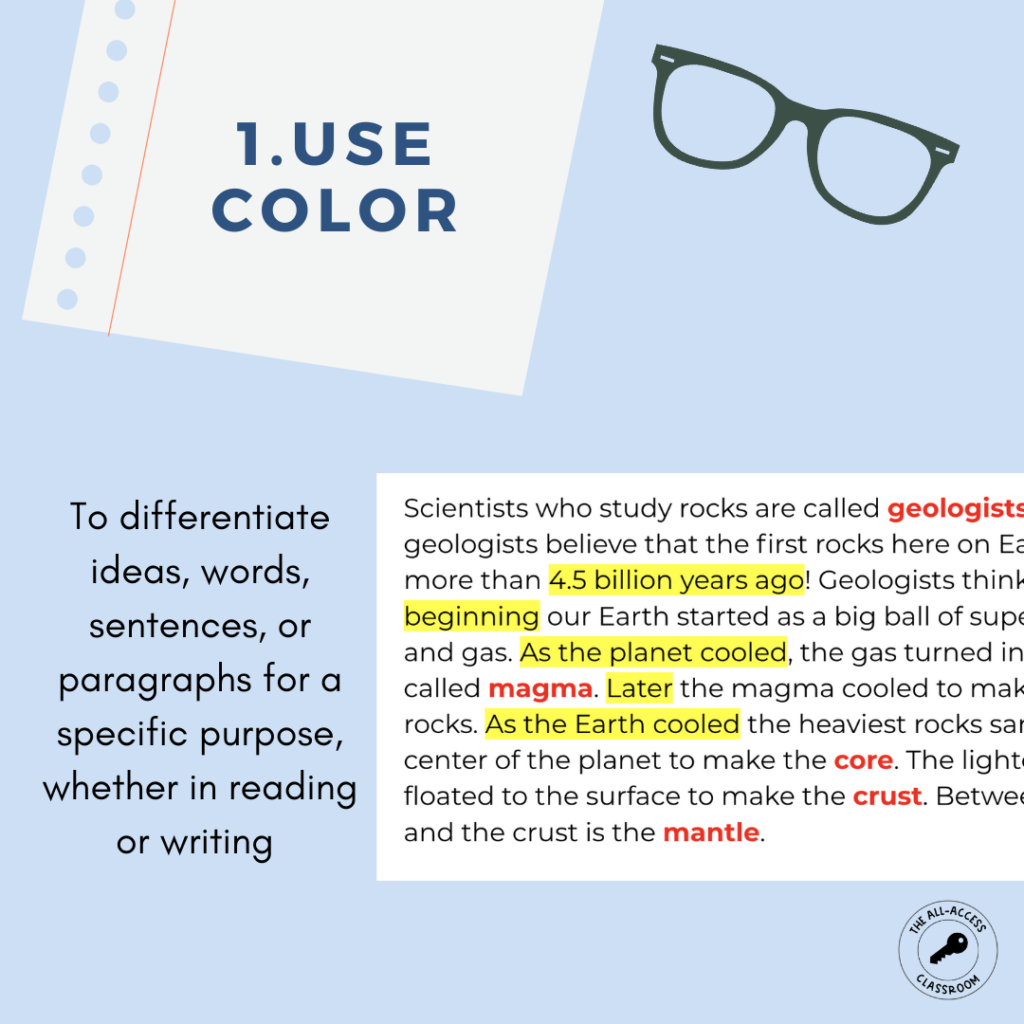
Break Text Into Smaller Sections
Also called “chunking the text,” this strategy visually breaks up longer pieces of text. This helps the student be able to process and comprehend the text in manageable amounts. This can be helpful at the word, sentence, and paragraph level. There are several ways you can do this:
- Draw a vertical line after sentences to add a more evident break where desired
- Circle or underline sections of words/text
- Increase space between paragraphs
- Break apart a longer text and add each paragraph to a slide in a presentation
- Use sections of a longer text to focus on during small group instruction
- Use sections of a longer text for assessment purposes
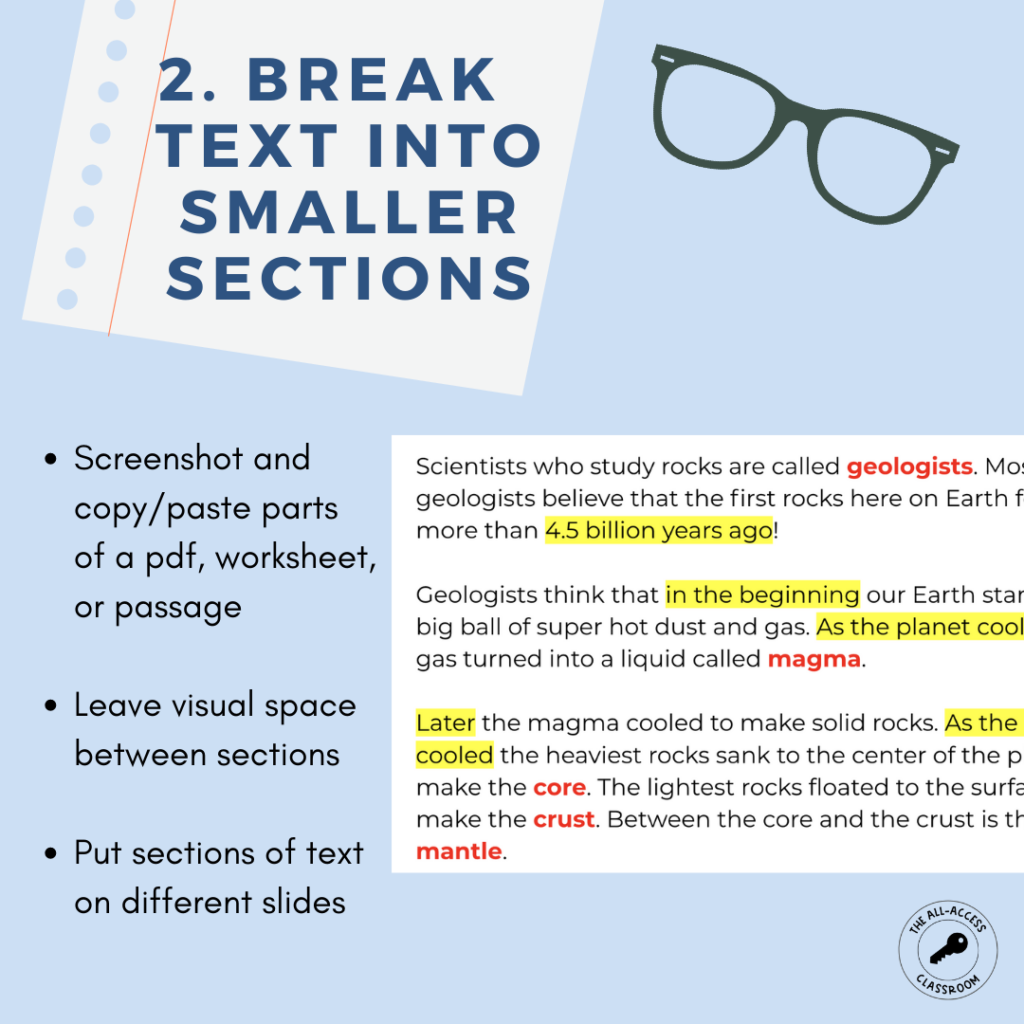
Insert Synonyms and Symbols
As students are learning new vocabulary all the time, they can really benefit from some reminders or reinforcement of word meanings. When you spot a word that you predict might hinder comprehension, simply inserting a synonym next to it can be extremely helpful. For example, if you’re handing an exit ticket to students, and the directions read, “Consider our lesson today…,” you might insert the words “think about” right above “consider.”
Symbols or “think marks” can be a great way to increase engagement during a shared reading or think aloud activity. They can aid comprehension of meaning, as students view you modeling your own response to text. This might include emojis, stars to show importance, or simple lines to connect ideas.
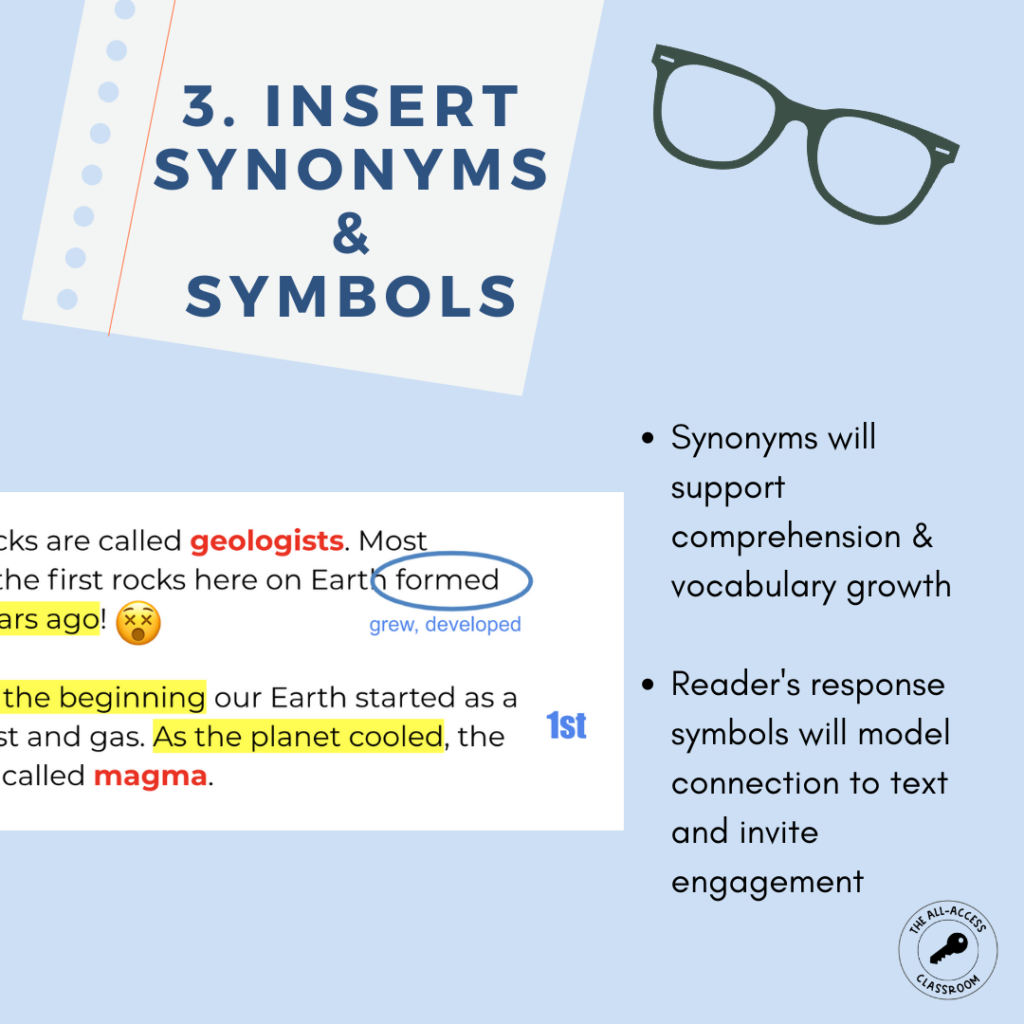
Add Images and Sketches
Many strategies for ELLs involve adding images to support text comprehension. If you’ve broken down a reading passage into sections, take a moment to also insert a small image next to each one. Want some essential unit vocabulary to be noticed and understood in context? Slide an image in near/next to the word. Have a multiple choice quiz coming up? Images are a great way to scaffold for ELLs.
Even if you’re in the middle of a lesson and realize the text lacks visual scaffolds, whip out a marker and do a quick sketch to support vocabulary meaning. (Repeat after me…a stick figure is better than no figure!) 🙂

Stick to a More Standard Font
Ok, so I can appreciate the beauty of a perfectly executed anchor chart heading, complete with cute calligraphy. I’ve seen so many amazing teacher font artists produce some enviable handwritten font! I’ve been thinking though…How well can our students read those elaborate fonts? I’m not saying resort to boring, plain lettering all the time. Just encouraging us as teachers to keep in mind what the text looks like to our students. Is it easy to read? Does it represent correct grammar and capitalization? Just some things to keep in mind.
Use a Graphic Organizer
This one is a bit next-level, but is a powerful scaffold for ELLs. If your able to take those “chunked text” pieces and insert them into a graphic organizer such as a circle map, timeline, comparison chart, or order of events template, it could help your ELLs:
- See the relationship between parts of the text
- View the order of importance or chronological order of events
- Understand a cause and effect
- Grasp the main idea of an entire text
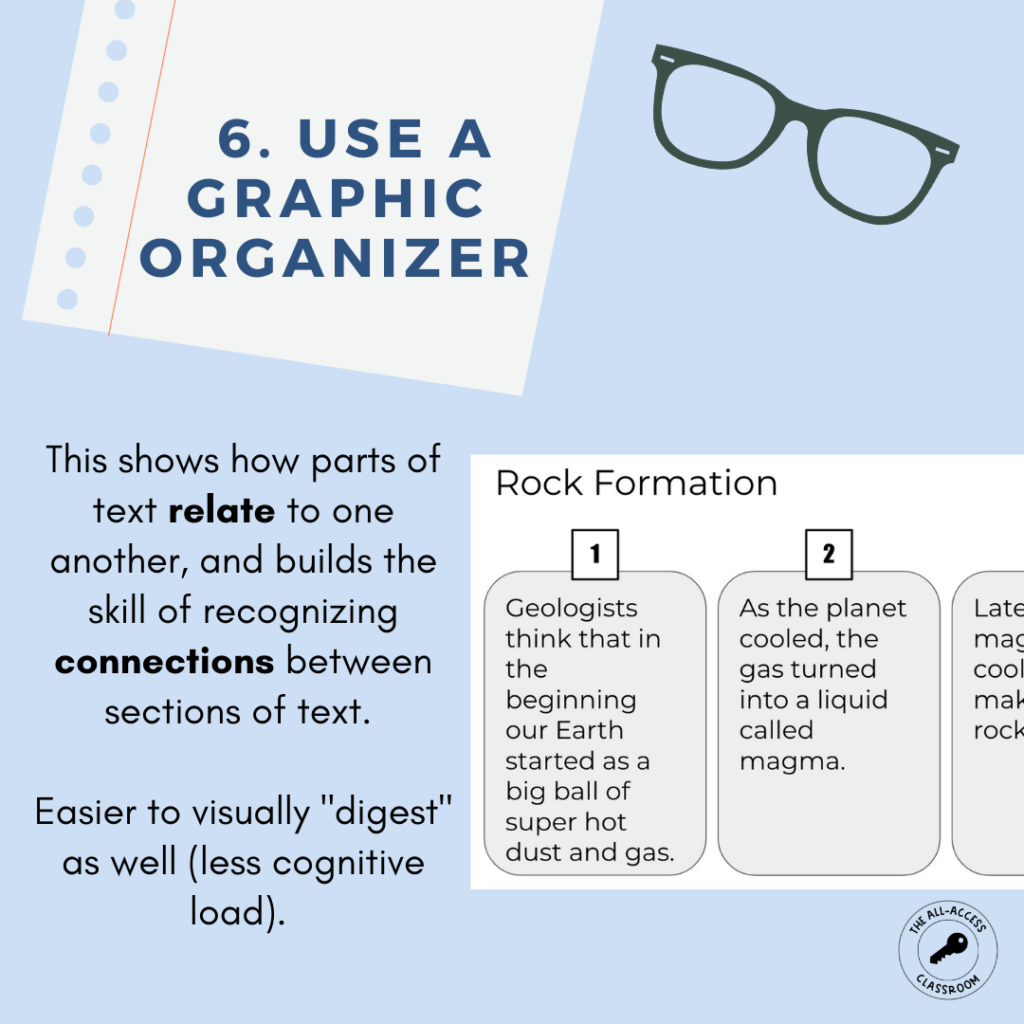
How to Scaffold for ELLs that are at Beginning Proficiency Levels
So you have a newcomer in your class, or an ELL with a beginning level of English proficiency? They may need a more appropriately modified text in order to access the content and information. For these students, I would recommend providing the text to them in their home language. A translation app such as Google translate or the Read&Write extension for the student’s internet browser are some recommended tools.
Another option (that can actually be even more time-efficient) is for you to rewrite, rephrase, or paraphrase the text, bringing it to a reading level that is appropriate. The benefit of this strategy is that you can be sure to include all the most important content that the student should learn.
At the end of the day, it is important for students at this proficiency level to have exposure to and engagement with grade-level text. So I would recommend using your professional judgement to determine when significant text modification is needed.
Some Related Resources:
Using Anticipation Guides To Assess Prior Knowledge and Engage Students in a New Topic
How to Write Content and Language Objectives for Lessons
Scaffolding Complex Essential Reading (Edutopia)
4 Questions that Drive Successful Scaffolds (Actively Learn)
I hope these tips can be helpful to you as you lesson plan, teacher friend! I have to be honest, my own personal struggles as a classroom teacher are what motivate me to offer coaching and support to you. I’m with you in wanting your students to have the best learning experience possible. I’m always learning more about how to scaffold for ELLs.
I’d love to get to know you better on Instagram, and have a free tool for you to try (see below)! Let’s make your classroom an All-Access Classroom! 🙂


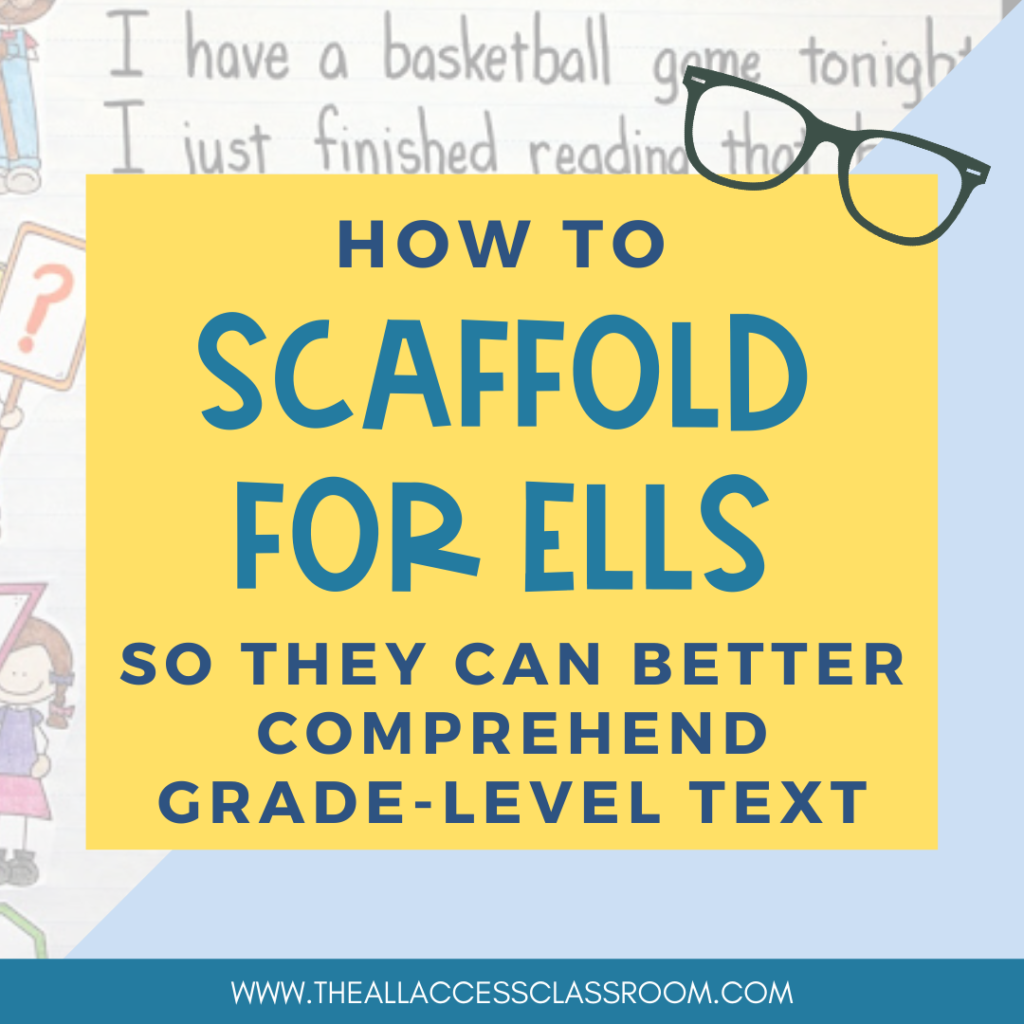
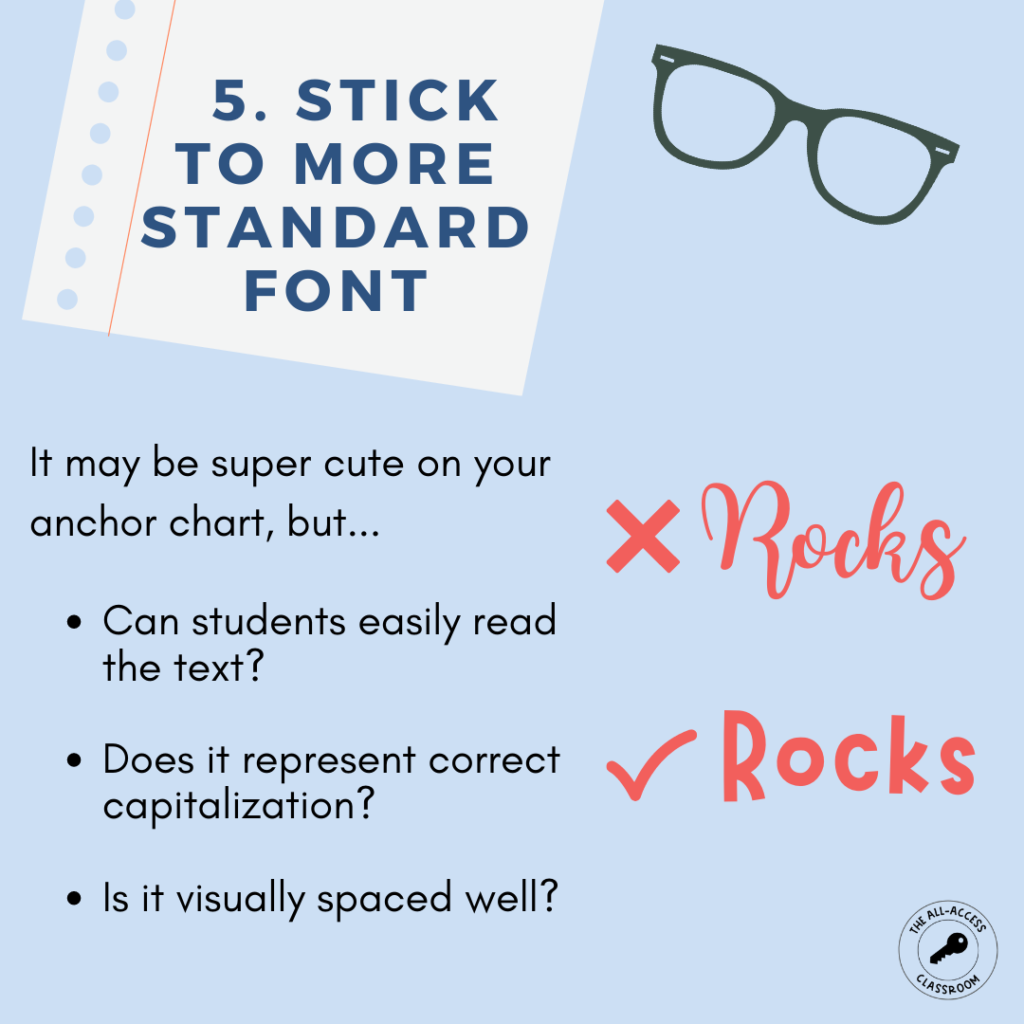
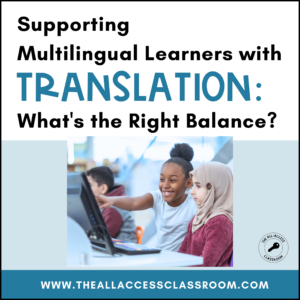
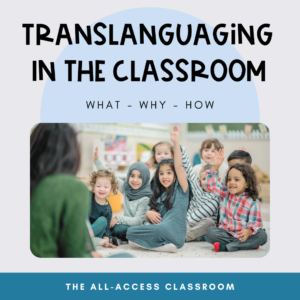
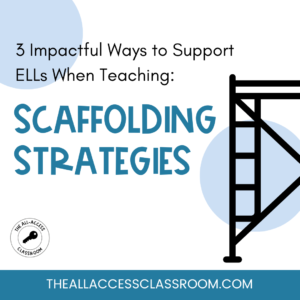

3 Responses